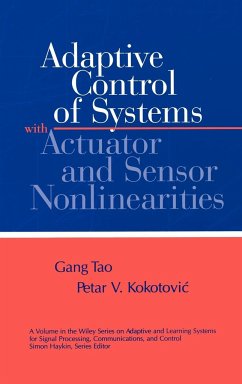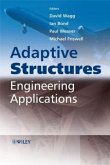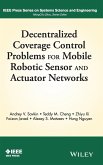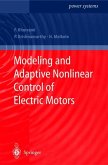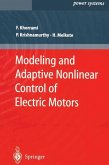An in-depth examination of intelligent approaches to increasing the accuracy of a variety of system components. Utilizing a unified, adaptive, inverse approach, the book offers electrical, mechanical, chemical, aeronautical and computer engineers methods for controlling many of the "hard" nonlinearities of frequently-employed control systems such as dead-zone, backlash and hysteresis. Discusses such nonlinearities at both the input and output points of a linear part and within both continuous time designs and discrete time designs. With the growing use of feedback controls, "hard" nonlinearities have become ubiquitous in engineering practice despite their rare treatment in academic texts. This book introduces a unified adaptive inverse approach for the control of systems with unknown nonlinearities and settles long-standing engineering problems posed by imperfections of actuators and sensors.
Focusing on dead-zone, backlash, and hysteresis, the authors show how real-time computations can counteract the effects of these nonlinearities. In many applications their approach avoids the need for costly and specialized hardware.
This easy-to-use, self-contained presentation of the entirely new adaptive inverse design is geared towards practicing engineers, researchers, and graduate students.
Adaptive Control of Systems with Actuator and Sensor Nonlinearities features:
Systematic treatment for actuator and sensor nonlinearities.
Examples of dead-zone, backlash, and hysteresis models and their inverses.
Broad coverage that ranges from satellite antennas and piezo-positioners to industrial automation and consumer electronics.
Step-by-step instructions for adaptive inverse design and implementation.
Unified continuous- and discrete-time presentation.
A concise review of model reference adaptive control theory.
Extensive illustrations of system performance improvement.
Over ninety figures and design examples.
Focusing on dead-zone, backlash, and hysteresis, the authors show how real-time computations can counteract the effects of these nonlinearities. In many applications their approach avoids the need for costly and specialized hardware.
This easy-to-use, self-contained presentation of the entirely new adaptive inverse design is geared towards practicing engineers, researchers, and graduate students.
Adaptive Control of Systems with Actuator and Sensor Nonlinearities features:
Systematic treatment for actuator and sensor nonlinearities.
Examples of dead-zone, backlash, and hysteresis models and their inverses.
Broad coverage that ranges from satellite antennas and piezo-positioners to industrial automation and consumer electronics.
Step-by-step instructions for adaptive inverse design and implementation.
Unified continuous- and discrete-time presentation.
A concise review of model reference adaptive control theory.
Extensive illustrations of system performance improvement.
Over ninety figures and design examples.

